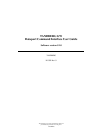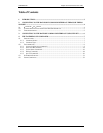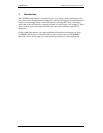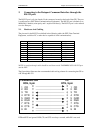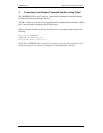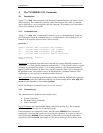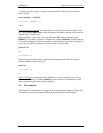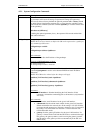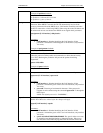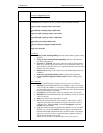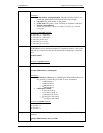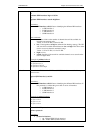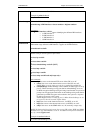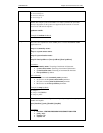
TANDBERG GW Dataport Command Interface User Guide
D13202 Rev 01 7
4. The TANDBERG GW Commands
4.1. Introduction
Typing ‘?’ or ‘help’ when connected to the Dataport Command Interface will return a list of
valid commands. The commands are used to control the functions of the GW. A command
may be followed by a set of parameters and sub-commands. This chapter gives a description
of the valid commands for the GW.
4.1.1. Command format
Typing ‘?’ or ‘help’ after a command will result in a usage text being displayed. Usage text
gives information about the command format, i.e. valid parameters, sub-commands etc. An
example is shown below (the user input is shown in bold).
prichan ?
usage: prichan <PRI interface> max <number>
or: prichan <PRI interface> high <number>
or: prichan <PRI interface> low <number>
or: prichan <PRI interface> search <high/low>
-
PRI interface - a/b/c/d
number : 1..23
Parameters
are arguments upon which the command will operate. Required parameters are
denoted by: < >, while optional parameters are denoted by: [ ]. The possible values for a given
parameter are separated with slashes ( / ). For some parameters, only the parameter name is
supplied within the brackets. In these cases a specific parameter value is to be substituted for
the parameter name. The possible values to be substituted for a parameter name are often
supplied below if it is not obvious what the possible values are.
Sub-commands
are commands grouped together within a command. Different sub-commands
within a command may have different parameter sets. In the example above: max, high, low,
search are sub-commands to the command prichan.
NOTE! The Dataport Command Interface is not case sensitive.
4.1.2. Command types
The commands can be divided into three major classes:
• System Commands
• Parameter Setting Commands
•
Status Commands
System Commands
are commands that initiate processes in the GW. E.g.: The command
calltransfer initiates the process of transferring a call.
If the command is not syntactically correct, the GW returns ERROR. If the command is
syntactically correct, but the system is not accepting the command, *R response feedback is
issued followed by ERROR. If the command is syntactically correct and the command is
accepted, the GW returns OK. An example of *R response feedback is shown below in the



